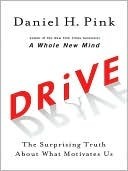More on this book
Community
Kindle Notes & Highlights
each week craft your own agenda of avoidance.
MOVE FIVE STEPS CLOSER TO MASTERY
“Deliberate practice is about changing your performance, setting new goals and straining yourself to reach a bit higher each time.”
Repeat, repeat, repeat. Repetition matters. Basketball greats don’t shoot ten free throws at the end of team practice; they shoot five hundred.
Seek constant, critical feedback. If you don’t know how you’re doing, you won...
This highlight has been truncated due to consecutive passage length restrictions.
Focus ruthlessly on where you need help. While many of us work on what we’re already good at, says Ericsson, “those who ge...
This highlight has been truncated due to consecutive passage length restrictions.
Prepare for the process to be mentally and physically exhausting. That’s why so few people commit to...
This highlight has been truncated due to consecutive passage length restrictions.
CREATE YOUR OWN MOTIVATIONAL POSTER
Type I for Organizations: Thirteen Ways to Improve Your Company, Office, or Group
CARVE OUT TIME FOR NONCOMMISSIONED WORK: THE BIG IDEA
CONDUCT AN AUTONOMY AUDIT
IRRIGATE THE FEEDBACK DESERT: DIY PERFORMANCE REVIEWS
IRRIGATE THE FEEDBACK DESERT: PEER-TO-PEER “NOW THAT” REWARDS
TAKE THREE STEPS TOWARD GIVING UP CONTROL
if you’re feeling the urge to control, here are three ways to begin letting go—for your own benefit and your team’s:
Involve people in goal-setting.
Use noncontrolling language.
Hold office hours.
PLAY “WHOSE PURPOSE IS IT ANYWAY?”
Hand everyone a blank three-by-five-inch card. Then ask each person to write down his or her one-sentence answer to the following question: “What is our company’s (or organization’s) purpose?” Keep the answers anonymous. Then collect the cards and read them aloud. What do they tell you?
USE REICH’S PRONOUN TEST
Do employees refer to their company as “they” or as “we”?
Everybody wants autonomy, mastery, and purpose. The thing is, “we” can get it—but “they” can’t.
DESIGN FOR THE 85 PERCENT
PROMOTE GOLDILOCKS FOR GROUPS
Here are a few ways to bring a little Goldilocks to your group:
Begin with a diverse team.
Make your group a “no competition” zone.
Try a little task-shifting.
Animate with purpose, don’t motivate with rewards.
GET AGILE
Agile Software Manifesto. Among the core principles:
Build projects around motivated individuals. Give them the environment and support they need, and trust them to get the job done.
Simplicity—the art of maximizing the amount of work not ...
This highlight has been truncated due to consecutive passage length restrictions.
The best architectures, requirements, and designs emerge from se...
This highlight has been truncated due to consecutive passage length restrictions.
PERSUADE YOUR BOSS BY STARTING SMALL (AND SUBVERSIVE)
Ask the right question.
“Is there one thing I can do tomorrow in my own domain to make things a little better?” The answer to that is almost always yes.
Be strategically subversive.
Emphasize results.
The Zen of Compensation: Paying People the Type I Way
Here are three key techniques.
ENSURE INTERNAL AND EXTERNAL FAIRNESS
PAY MORE THAN AVERAGE
IF YOU USE PERFORMANCE METRICS, MAKE THEM WIDE-RANGING, RELEVANT, AND HARD TO GAME
THE ZEN OF COMPENSATION RECONSIDERED: ARE SALESPEOPLE DIFFERENT?
Both Weinstein and Davidson have found that challenging the sanctity of commissioned sales can bring several, often unexpected, benefits. For example, in Red Gate’s case, managers were spending a huge amount of time and energy policing the compensation system and arbitrating disputes over who deserved what. Once pay arrangements became simpler, leaders could focus their efforts on more useful activities.
Type I for Parents and Educators: Ten Ideas for Helping Our Kids
APPLY THE THREE-PART TYPE I TEST FOR HOMEWORK
Am I offering students any autonomy over how and when to do this work? • Does this assignment promote mastery by offering a novel, engaging task (as opposed to rote reformulation of something already covered in class)? • Do my students understand the purpose of this assignment? That is, can they see how doing this additional activity at home contributes to the larger enterprise in which the class is engaged?


